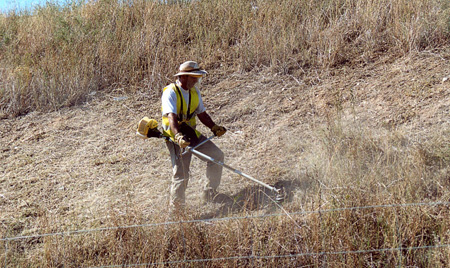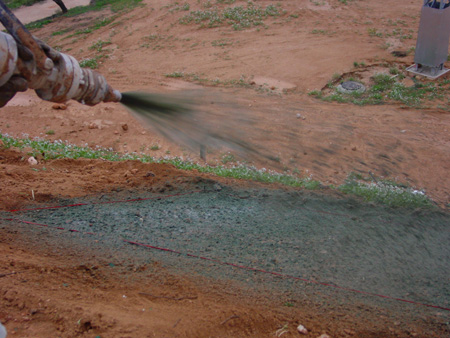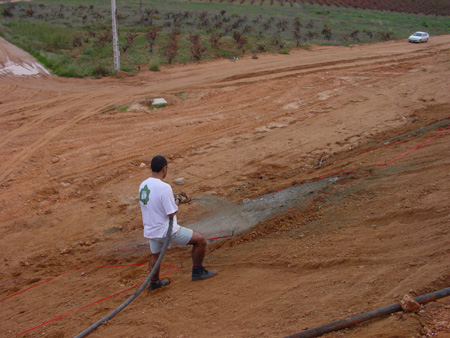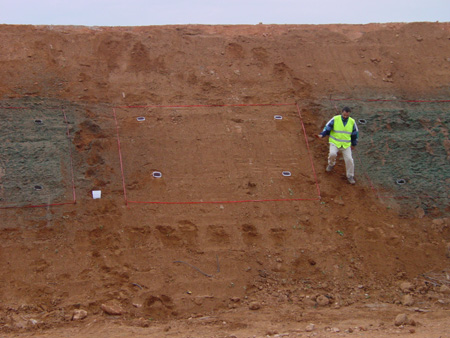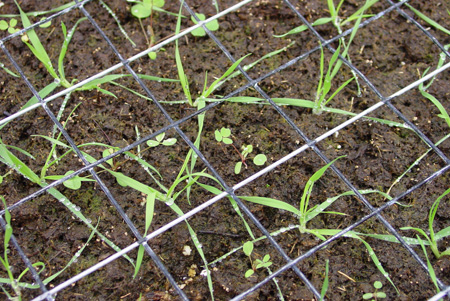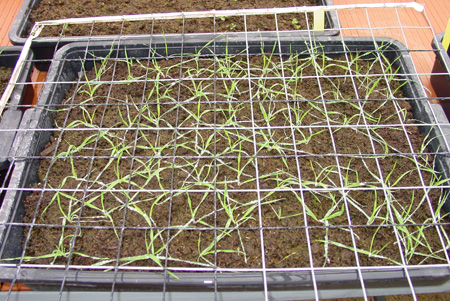- ESTUDIOS EXPERIMENTALES
- Experimental studies in the field
- Sowing at small spatial scale on roadfills: plot preparation (weeding). (1)
- Sowing at small spatial scale on roadfills: seed germination and seedling establishment after sowing. (2)
- Roadfill revegetation by hydroseeding (3)
- Roadfill revegetation by hydroseeding (4)
- Roadfill revegetation by hydroseeding (5)
- Sowing at small spatial scale on roadcuts: seed germination and seedling establishment after sowing. (6)
- Sowing at small spatial scale on roadcuts: seed germination and seedling establishment after sowing. (7)
- Experimental sowing in greenhouse conditions to determine the effect of plant coexistence on species performance
- Coexistence esperiment: Plurispecific treatment Bromus rubens 1. (8)
- Coexistence experiment: Monospecific treatment Bromus rubens 2. (9)
- Coexistence experiment: Monoespecific treatment Bromus rubens. (10)
- Experimental studies in the field
Experimental studies
Experimental sowing experiments at small spatial scale were performed on roadfills. They aimed at selecting useful species for roadfill revegetation in semiarid environments. During plot preparation, pre-established vegetation was removed before sowing.
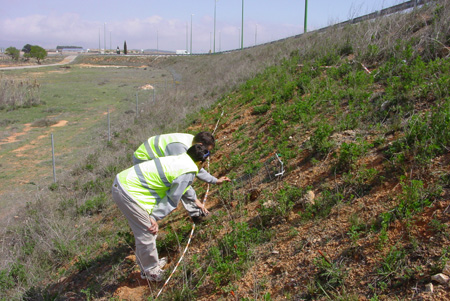 Sowing at small spatial scale on roadfills: seed germination and seedling establishment after sowing (2)
Sowing at small spatial scale on roadfills: seed germination and seedling establishment after sowing (2)
After sowing, seed germination and seedling establishment rates are recorded.
Hydroseeding is the most widespread revegetation method used for the mechanical stabilization of barren slopes and control of water erosion.
Hydroseeding is usually performed using standard comercial seed mixtures that are available by seed suppliers.
During the hydroseeding process, a mixture of water, seeds, mulch and fertilizers is thrown into the slopes.
Different treatments were tested in roadfills. In the picture, two plots with green color (mulch) were hydroseeded with comercial or local species and one control plot, in the middle, was not hydroseeded.
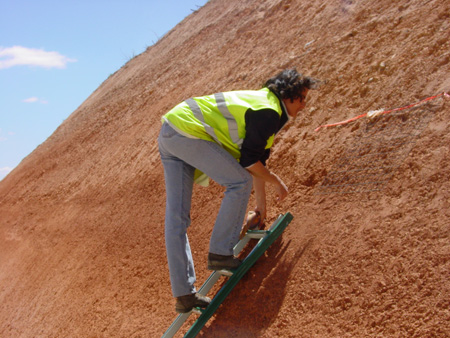 Sowing at small spatial scale on roadcuts: seed germination and seedling establishment after sowing (6)
Sowing at small spatial scale on roadcuts: seed germination and seedling establishment after sowing (6)
Hydroseeding success with standard commercial seed mixtures is usually low on semiarid roadcuts. A sowing experiment at small spatial scale was performed in roadcuts using local species that are able to colonize spontaneously and successfully similar slopes.
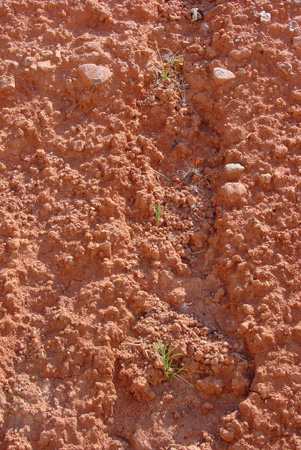 Sowing at small spatial scale on roadcuts: seed germination and seedling establishment after sowing (7)
Sowing at small spatial scale on roadcuts: seed germination and seedling establishment after sowing (7)
Rills with a higher soil moisture content than the interrill areas are favourable sites for seed germination and seedling establishment on roadcuts.
Performance of hydroseeded species depends on several factors, as the species ability to coexist with other hydroseeded species included in the seed mixture.
The performance of species sowed in monospecific and plurispecific treatments was compared.

